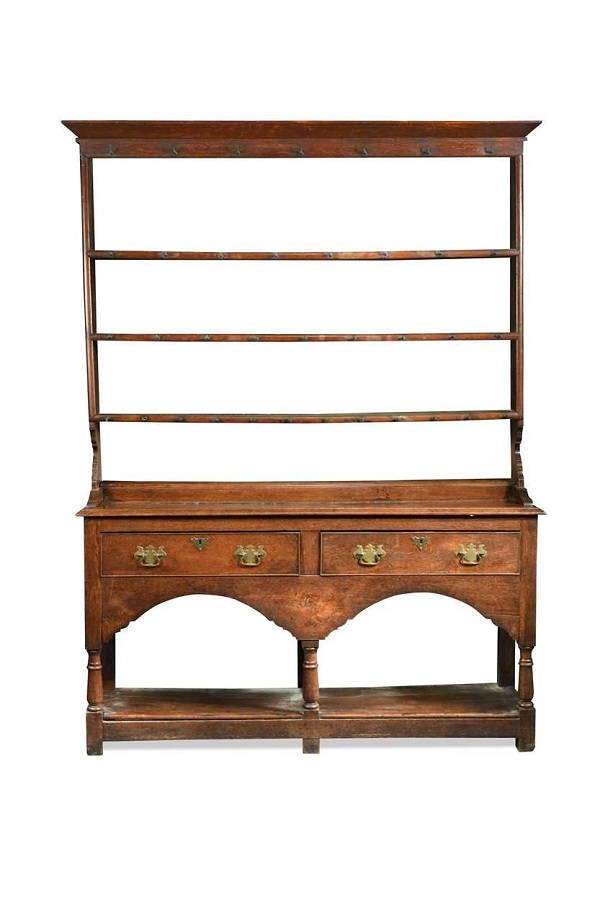The so called ‘Welsh’ dresser has been for many centuries the centrepiece of both town and country kitchens alike being the practical solution for the storage of plates, glasses, cutlery, linen and pots in the days before the concept of the fitted kitchen was born. During the latter part of 20th and early 21st centuries they saw something of a demise in popularity but now appear to be making a coming back with leading British designers such as Ben Pentreath and Rita Konig favouring them to give an authentic feeling and character to their interiors.
Often mistakenly known as ‘Welsh’ dressers not all and in fact many were not actually produced in Wales but rather from differing regions throughout the British Isles each often with their own regional twist be it in the shape of a leg or the way an apron is carved. A quirky example of this is to be found in some Scottish dressers which include a ‘porridge drawer’ into which the hot oaty mixture was poured and left to set.

Lot 367, a Welsh oak dresser from the 18th century, estimate £500 - £800
Produced primarily throughout the 18th, 19th and early 20th centuries dressers could in fact be seen as some of the earliest versions of the kitchen unit with the finest examples being made of oak, elm, walnut or even yew. 18th century examples can make anything from between £300 to £10,000 but as always would-be buyers should look out for condition and originality, as being pieces of a mainly vernacular nature time and wear tends to take its toll, together with adaptations due to the changing fashions of the day.

Lot 322, an oak dresser from the 18th century, estimate £300 - £500
Provenance of course can also have a dramatic affect with dressers which once stood in important country houses having an added cachet. There are three good examples, one Welsh in our forth coming Fine sale on 23rd March all reasonably priced in the middle hundreds.
To view the catalogue for The Fine Sale, please click here